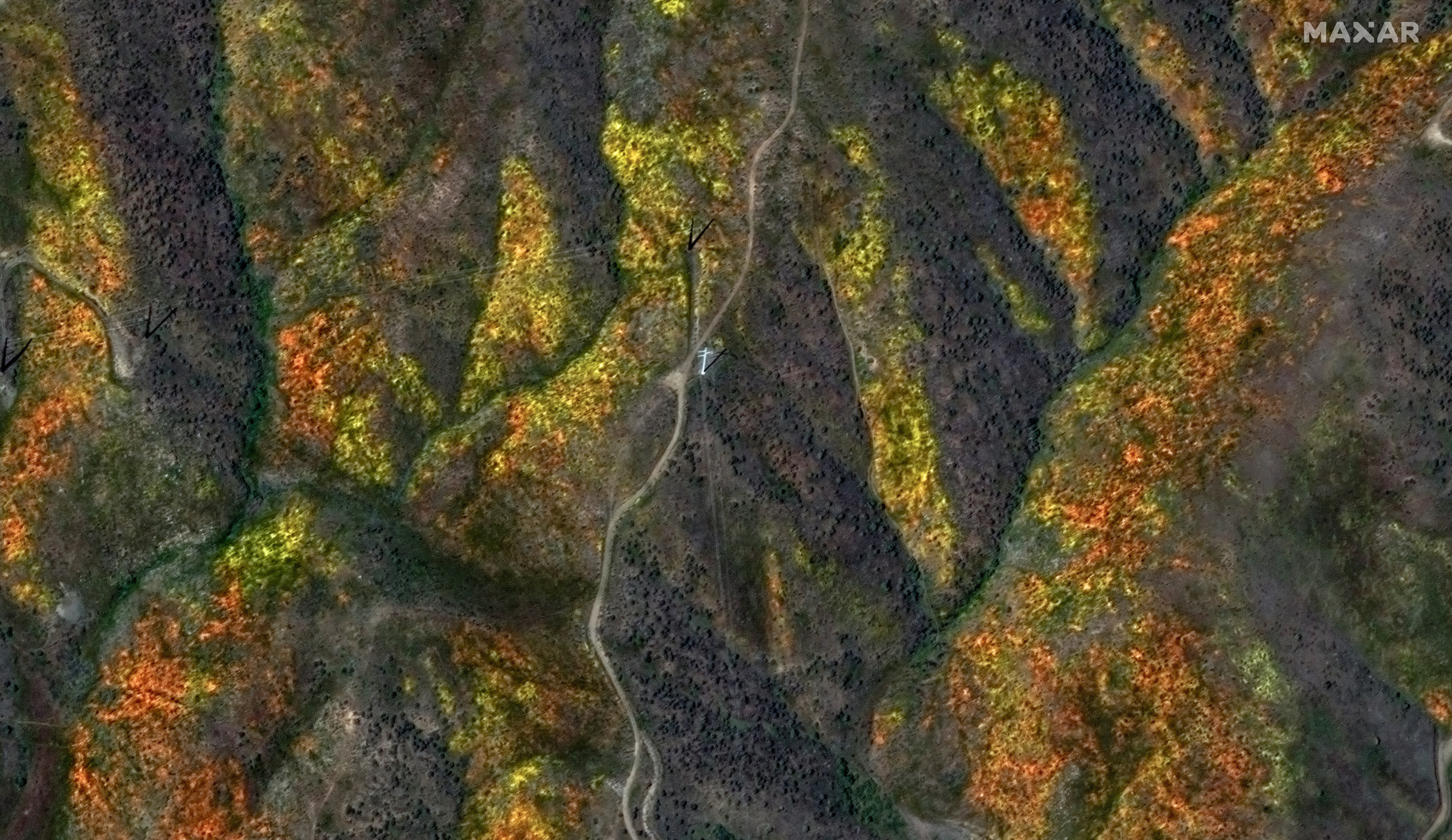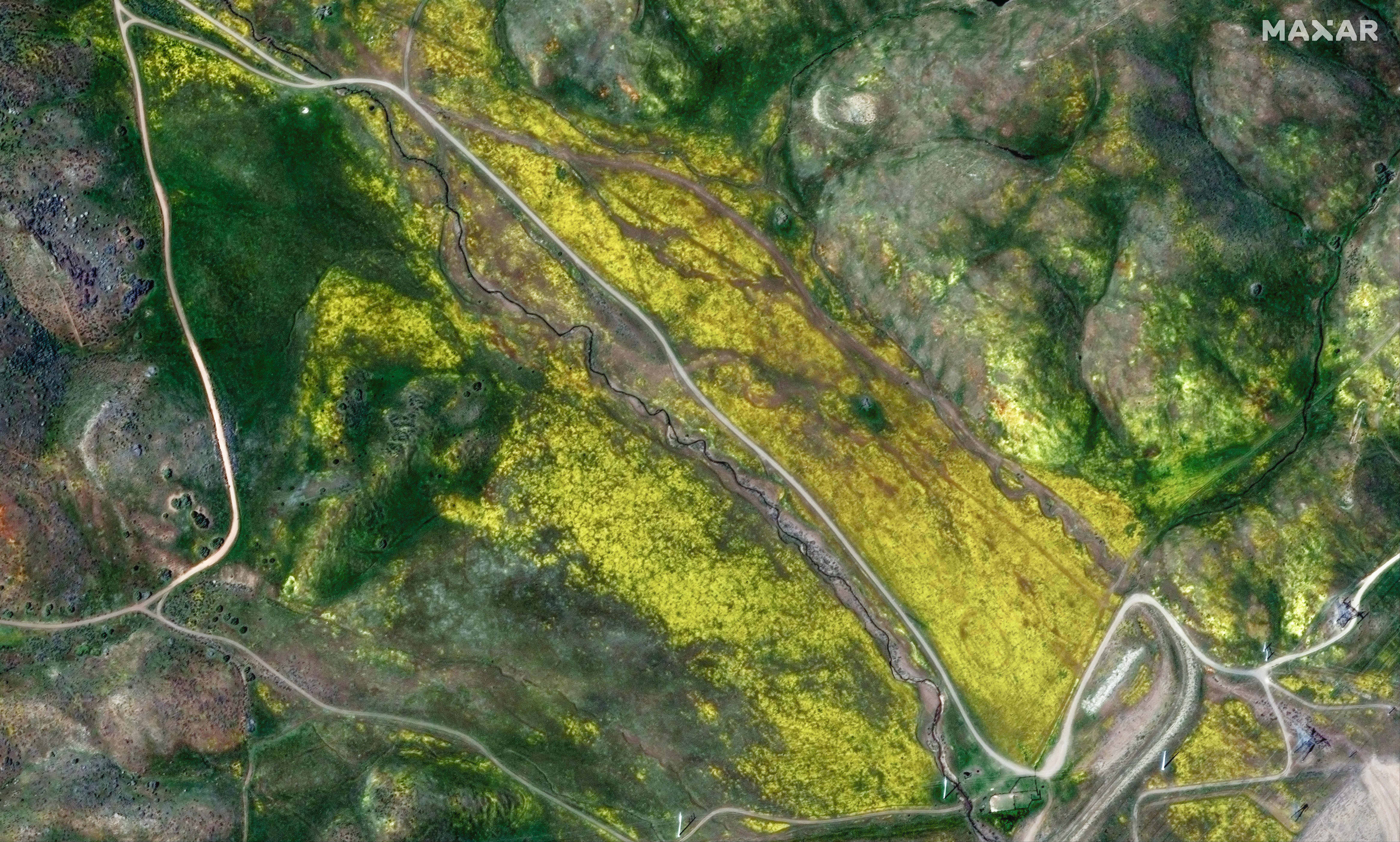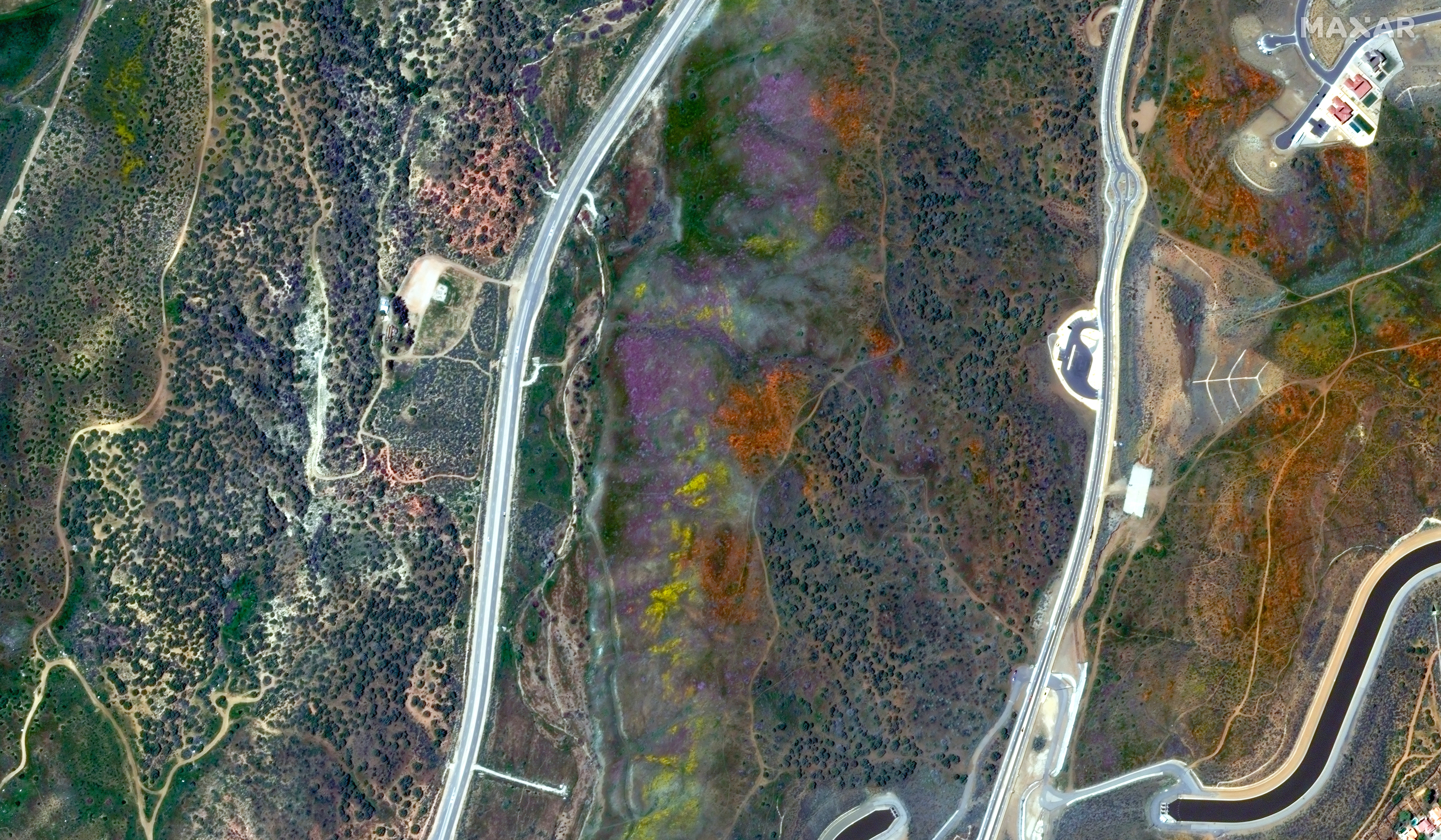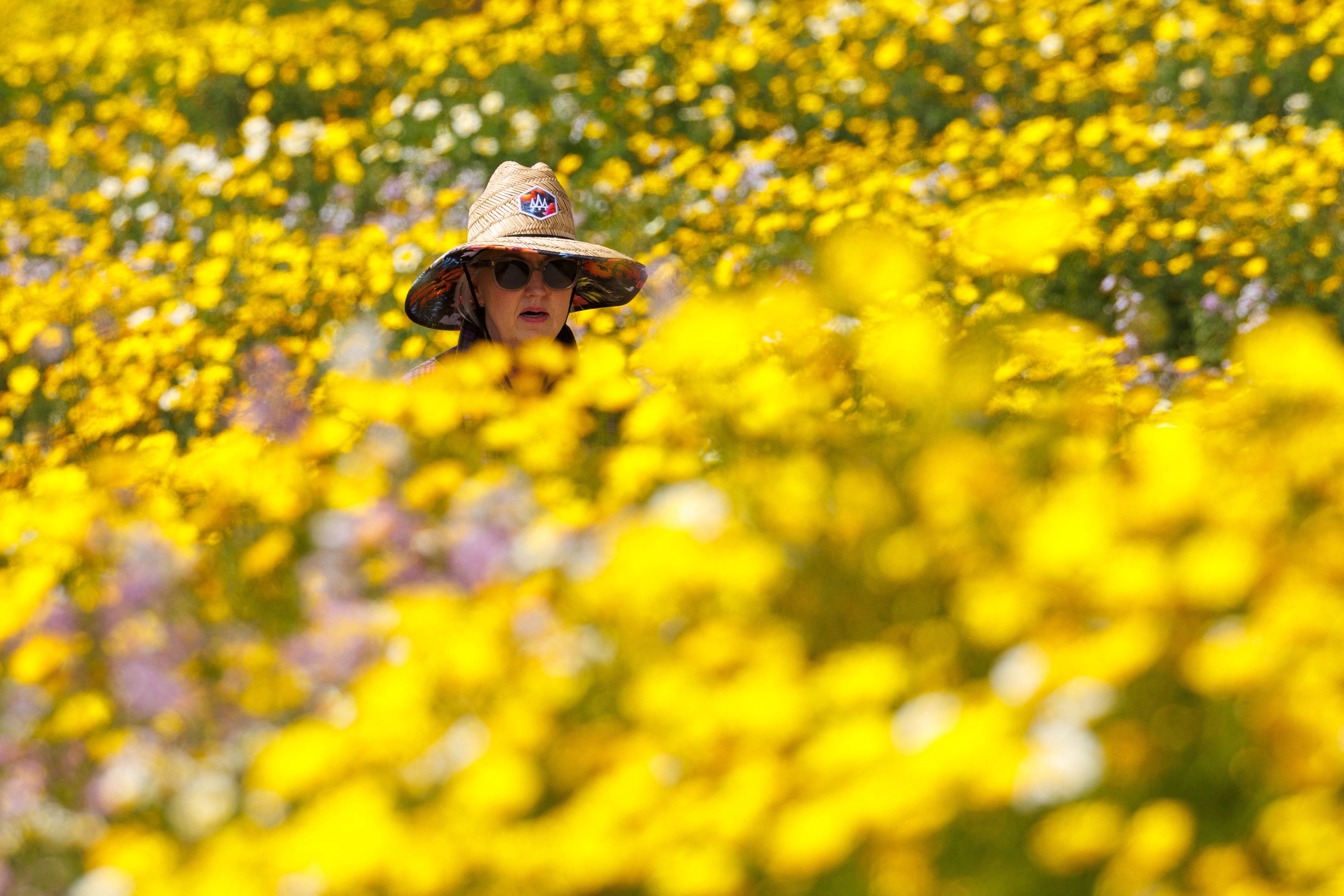Wildflower ‘super-blooms’ blanket California after winter of historic downpours
The blooms are so vibrant that they can be seen from space
California is experiencing a spring filled with wildflower superblooms after a winter of historic rainfall.
Fields, hillsides and canyons across the state have been carpeted in a colourful riot of the tiny flowers in recent weeks.
The blooms are so vibrant that they can be seen from space. New satellite images, published by Maxar Technologies, revealed vivid streaks of colour across the regions of Palmdale, Santa Margarita and Antelope Valley.
The Mojave Desert grassland habitat of the Antelope Valley California Poppy Reserve, north of Los Angeles, has been transformed into a sea of orange and yellow.
The desert landscape of Joshua Tree National Park in southern California has been carpeted in a diverse array of wildflowers from Canterbury bells and purple mat to yellow cups.
In the forests of northern California, there are bursts of calypso and “fairy-slipper” orchids.

The wildflower blooms are expected to continue into May, according to the California Department of Parks and Recreation, which keeps a log of wildflower updates on its website.
Superblooms have blanketed not only California but desert regions of neighbouring Arizona, where blue lupine and orange poppies are erupting around the saguaro cactus.
The US West has been swamped by severe storms since December, dumping record amounts of snow and rain. These atmospheric rivers – or “rivers in the sky” – are bands of water vapor that form over the ocean and can be hundreds of miles wide.

In California, there have tragic consequences: at least 22 people died in the flooding and the damage to homes and businesses has been widespread.
Atmospheric rivers may be increasing in intensity and frequency due to the climate crisis, scientists have warned. As the atmosphere heats up, it becomes capable of holding more water and leads to greater amounts of precipitation.
But the upside has been that drought-ravaged California has had its reservoirs replenished due to the rainfall and runoff from a record snowpack.
Only about one-third of the state is currently in “abnormally dry” conditions, according to the US Drought Monitor.


Officials announced on Thursday that the state will provide 100 per cent of the water requested by cities and farms in 2023, for the first time in years.
The State Water Project will provide full allocations to 29 water agencies supplying about 27 million customers and 750,000 acres of farmland, the Department of Water Resources said.
As late as March, the agency was only expecting to provide 75 per cent of requested water supplies. The last time the state agency fully met water requests was in 2006.
Three years of drought had pinched off supplies drastically in the nation’s most populous state. Late last year, nearly all of California was in drought, including at extreme and exceptional levels. Wells ran dry, farmers fallowed fields, and cities restricted watering grass.

The water picture changed dramatically starting in December, when the first of a dozen “ atmospheric rivers ” hit, causing widespread flooding and damaging homes and infrastructure, and dumping as many as 700 inches (17.8 meters) of snow in the Sierra Nevada mountains.
The statewide reservoir storage on Thursday was at 105 per cent of the average for the date, the Department of Water Resources said.
However, the Department of Water Resources urged people to continue using water cautiously. State officials have warned that in the climate-crisis era, one extremely wet year could be followed by several dry years, returning the state to drought.
With reporting from the Associated Press
Join our commenting forum
Join thought-provoking conversations, follow other Independent readers and see their replies
Comments

Bookmark popover
Removed from bookmarks